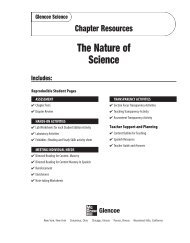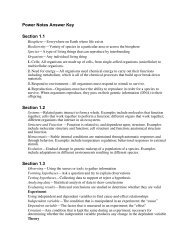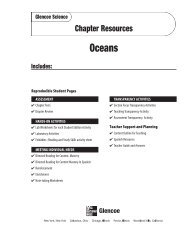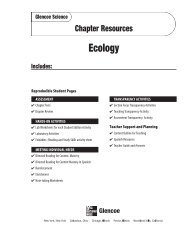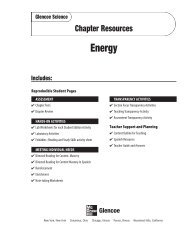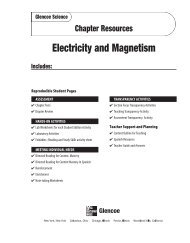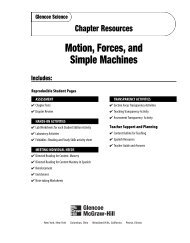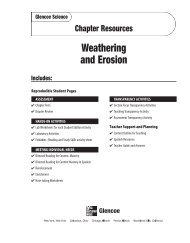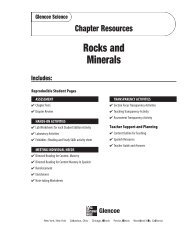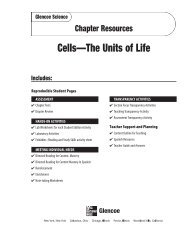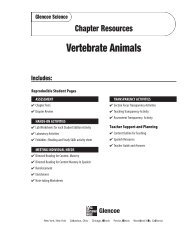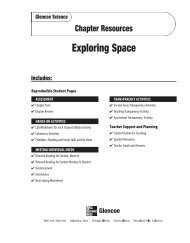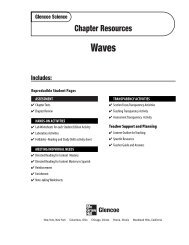Content Outline for Teaching - Potosi School District - Home
Content Outline for Teaching - Potosi School District - Home
Content Outline for Teaching - Potosi School District - Home
Create successful ePaper yourself
Turn your PDF publications into a flip-book with our unique Google optimized e-Paper software.
15<br />
Section 3<br />
<strong>Content</strong> <strong>Outline</strong><br />
<strong>for</strong> <strong>Teaching</strong><br />
Stars and Galaxies<br />
The Solar System<br />
and Beyond<br />
Underlined words and<br />
phrases are to be filled<br />
in by students on the<br />
Note-taking Worksheet.<br />
A. Constellations—groups of stars that <strong>for</strong>m a pattern in the sky<br />
B. A star has a life cycle that depends on its size.<br />
1. Stars begin as huge clouds of dust and gas that contract and heat up to the<br />
point of fusion.<br />
2. Small stars shine longer than larger stars.<br />
3. A medium-sized star ends up as a black dwarf, while a larger star explodes as a<br />
supernova that could eventually become a black hole.<br />
C. Galaxy—group of stars, gas, and dust held together by gravity<br />
1. Elliptical-shaped galaxies are most common.<br />
2. Spiral galaxies look something like a pinwheel.<br />
3. Irregular galaxies are smaller and less common than other galaxies.<br />
4. Earth is located in the Milky Way Galaxy.<br />
5. A light-year is the distance light travels in a year, approximately 9.5 trillion km.<br />
6. The universe,containing billions of galaxies, seems to be expanding.<br />
Discussion Question<br />
What does a star’s life cycle depend on? its size<br />
The Solar System and Beyond 50




